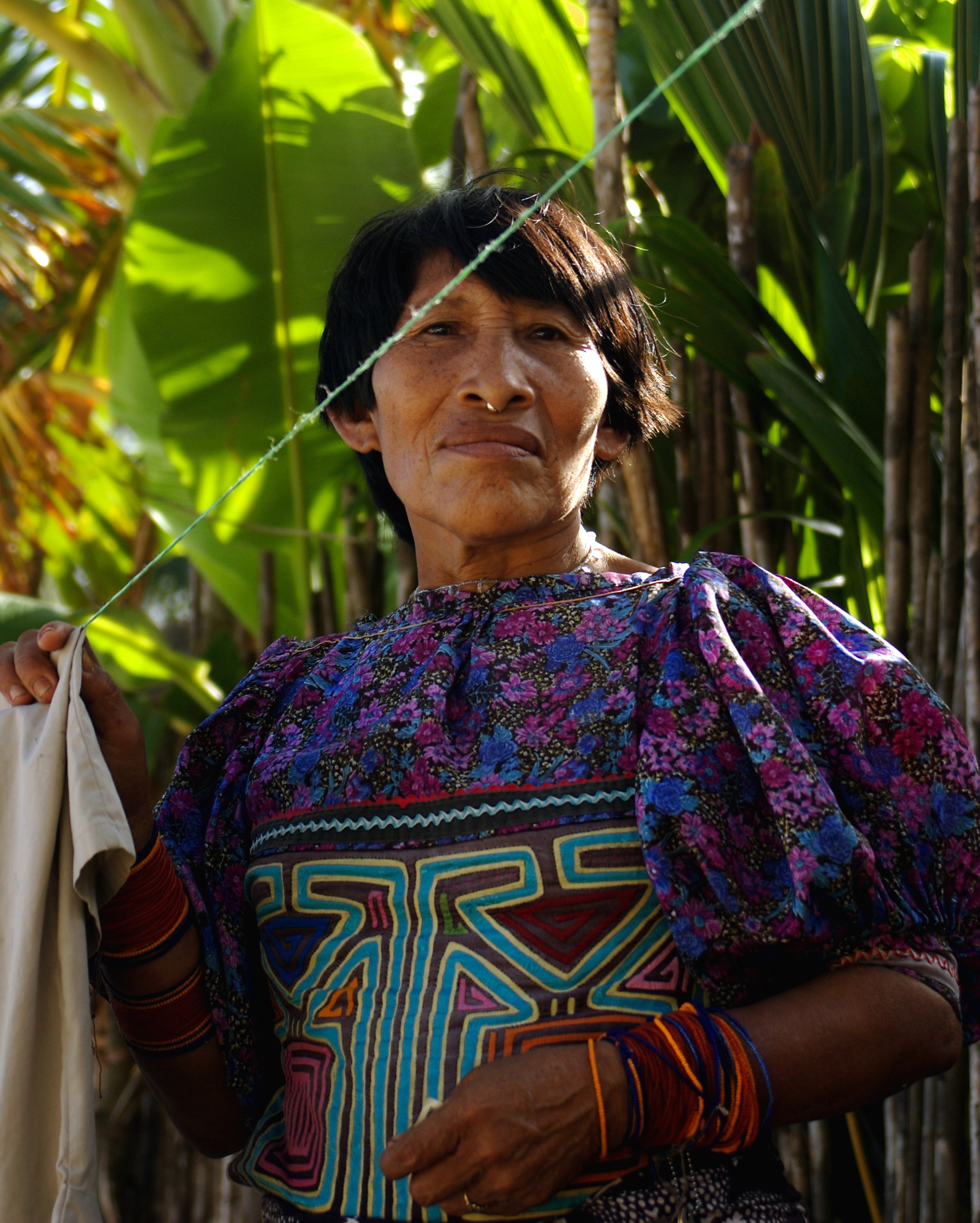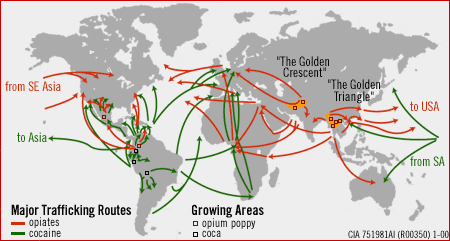|
Guna People
The Guna, are an Indigenous people of Panama and Colombia. In the Guna language, they call themselves ''Dule'' or ''Tule'', meaning "people", and the name of the language is ''Dulegaya'', literally "people-mouth". The term was in the language itself spelled ''Kuna'' prior to a 2010 orthographic reform, but the Congreso General de la Nación Gunadule since 2010 has promoted the spelling ''Guna''. Location Guna people live in three politically autonomous ''comarcas'' or autonomous reservations in Panama, and in a few small villages in Colombia. There are also communities of Guna people in Panama City, Colón, and other cities. Most Gunas live on small islands off the coast of the comarca of Guna Yala known as the San Blas Islands. The other two Guna comarcas in Panama are Kuna de Madugandí and Kuna de Wargandí. They are Guna-speaking people who once occupied the central region of what is now Panama and the neighboring San Blas Islands and still survive in marginal areas. Pol ... [...More Info...] [...Related Items...] OR: [Wikipedia] [Google] [Baidu] |
Kuna De Wargandí
Guna de Wargandí or Wargandí, formerly known as Kuna de Wargandí () is a '' comarca indígena'' (indigenous territory) and corregimiento in Pinogana District, Darién Province, Panama with a population of 1,914 as of 2010. It was created by Law 34 of July 25, 2000, from the province of Darién, from the district of Pinogana. It has an area of . It is inhabited by the Guna people. Geography It is a region of Guna and its status is local township, so this has no political subdivision or capital. It is located in the basin are high Chucunaque River in the territory segregated districts Pinogana Chepigana and the province of Darien. People live in three communities, Mortí, Nurra and Wala __NOTOC__ Wala may refer to: Places * Wala (island), a small island in Vanuatu, and a popular destination for cruise ships * Wala, Panama, a community in Kuna de Wargandí, Panama *Kingdom of Wala a pre-colonial polity in the north of modern Ghana .... This ''comarca'' is not divided into ... [...More Info...] [...Related Items...] OR: [Wikipedia] [Google] [Baidu] |
Illegal Drug Trade
The illegal drug trade or drug trafficking is a global black market dedicated to the cultivation, manufacture, distribution and sale of prohibited drugs. Most jurisdictions prohibit trade, except under license, of many types of drugs through the use of drug prohibition laws. The think tank Global Financial Integrity's ''Transnational Crime and the Developing World'' report estimates the size of the global illicit drug market between US$426 and US$652billion in 2014 alone. With a world GDP of US$78 trillion in the same year, the illegal drug trade may be estimated as nearly 1% of total global trade. Consumption of illegal drugs is widespread globally and it remains very difficult for local authorities to thwart its popularity. History The government of the Qing Dynasty issued edicts against opium smoking in 1730, 1796 and 1800. The West prohibited addictive drugs throughout the late 19th and early 20th centuries. Beginning in the 18th century, British merchants from th ... [...More Info...] [...Related Items...] OR: [Wikipedia] [Google] [Baidu] |
Carti Region , surname
{{dab, surname ...
Carti or Cartí may refer to: *Playboi Carti (born 1996), American rapper *Cartí Sugtupu, one of the Cartí islands off the coast of Panama *Cartí Airport, airport on Panamanian mainland serving the Cartí islands See also *Carty Carty or Carthy is a surname likely to have originated from the Irish name Ó Cárthaigh (Connacht and , ; anglicised as O'Coraic). It took its current form ''Carty'' during later historical events when many Gaelic Irish names were anglicised. I ... [...More Info...] [...Related Items...] OR: [Wikipedia] [Google] [Baidu] |
Coconut
The coconut tree (''Cocos nucifera'') is a member of the palm tree family ( Arecaceae) and the only living species of the genus ''Cocos''. The term "coconut" (or the archaic "cocoanut") can refer to the whole coconut palm, the seed, or the fruit, which botanically is a drupe, not a nut. The name comes from the old Portuguese word '' coco'', meaning "head" or "skull", after the three indentations on the coconut shell that resemble facial features. They are ubiquitous in coastal tropical regions and are a cultural icon of the tropics. The coconut tree provides food, fuel, cosmetics, folk medicine and building materials, among many other uses. The inner flesh of the mature seed, as well as the coconut milk extracted from it, form a regular part of the diets of many people in the tropics and subtropics. Coconuts are distinct from other fruits because their endosperm contains a large quantity of clear liquid, called ''coconut water'' or ''coconut juice''. Mature, ripe coconut ... [...More Info...] [...Related Items...] OR: [Wikipedia] [Google] [Baidu] |
Dugout In San Blas Islands
Dugout may refer to: * Dugout (shelter), an underground shelter * Dugout (boat), a logboat * Dugout (smoking), a marijuana container Sports * In bat-and-ball sports, a dugout is one of two areas where players of the home or opposing teams sit when not at bat or in the field ** Dugout (baseball), a covered shelter near the diamond ** Dugout (cricket), an area at either end of the field * In association football, the technical area contains the dugouts Music * ''Dug Out was the seventh studio album released by the Japanese rock band The Blue Hearts and the eighth album released overall. Tracks #"Tegami" (手紙 ''Letter'') #"Midori no Happa" (緑のハッパ ''Green Leaf'') #"Torch Song" (トーチソング ' ...'', the seventh album by the Japanese band ''The Blue Hearts'' Places * Dugout, West Virginia, USA {{disambig ... [...More Info...] [...Related Items...] OR: [Wikipedia] [Google] [Baidu] |
National Dress
A folk costume (also regional costume, national costume, traditional garment, or traditional regalia) expresses an identity through costume, which is usually associated with a geographic area or a period of time in history. It can also indicate social, marital or religious status. If the costume is used to represent the culture or identity of a specific ethnic group, it is usually known as ethnic costume (also ethnic dress, ethnic wear, ethnic clothing, traditional ethnic wear or traditional ethnic garment). Such costumes often come in two forms: one for everyday occasions, the other for traditional festivals and formal wear. Following the rise of romantic nationalism, the pre-industrial peasantry of Europe came to serve as models for all that appeared genuine and desirable. Their dresses are crystallized into so-called "typical" forms, and enthusiasts adopted that attire as part of their symbolism. In areas where Western dress codes have become usual, traditional garments are ... [...More Info...] [...Related Items...] OR: [Wikipedia] [Google] [Baidu] |
Appliqué
Appliqué is ornamental needlework in which pieces or patches of fabric in different shapes and patterns are sewn or stuck onto a larger piece to form a picture or pattern. It is commonly used as decoration, especially on garments. The technique is accomplished either by hand stitching or machine. Appliqué is commonly practised with textiles, but the term may be applied to similar techniques used on different materials. In the context of ceramics, for example, an appliqué is a separate piece of clay added to the primary work, generally for the purpose of decoration. The term originates from the Latin ''applicō'' "I apply" and subsequently from the French ''appliquer'' "attach". History The term appliqué is derived from French and Latin verbs ''appliquer'' and ''applicare'', respectively, which both mean to join or attach. Like embroidery, it has a humble beginning. The technique was used as a way to strengthen worn areas of items or to patch holes that had formed. Early ap ... [...More Info...] [...Related Items...] OR: [Wikipedia] [Google] [Baidu] |
Nazi
Nazism ( ; german: Nazismus), the common name in English for National Socialism (german: Nationalsozialismus, ), is the far-right totalitarian political ideology and practices associated with Adolf Hitler and the Nazi Party (NSDAP) in Nazi Germany. During Hitler's rise to power in 1930s Europe, it was frequently referred to as Hitlerism (german: Hitlerfaschismus). The later related term " neo-Nazism" is applied to other far-right groups with similar ideas which formed after the Second World War. Nazism is a form of fascism, with disdain for liberal democracy and the parliamentary system. It incorporates a dictatorship, fervent antisemitism, anti-communism, scientific racism, and the use of eugenics into its creed. Its extreme nationalism originated in pan-Germanism and the ethno-nationalist '' Völkisch'' movement which had been a prominent aspect of German nationalism since the late 19th century, and it was strongly influenced by the paramilitary groups that ... [...More Info...] [...Related Items...] OR: [Wikipedia] [Google] [Baidu] |
Swastika
The swastika (卐 or 卍) is an ancient religious and cultural symbol, predominantly in various Eurasian, as well as some African and American cultures, now also widely recognized for its appropriation by the Nazi Party and by neo-Nazis. It continues to be used as a symbol of divinity and spirituality in Indian religions, including Hinduism, Buddhism, and Jainism. It generally takes the form of a cross, the arms of which are of equal length and perpendicular to the adjacent arms, each bent midway at a right angle. The word ''swastika'' comes from sa, स्वस्तिक, svastika, meaning "conducive to well-being". In Hinduism, the right-facing symbol (clockwise) () is called ', symbolizing ("sun"), prosperity and good luck, while the left-facing symbol (counter-clockwise) () is called ''sauwastika'', symbolising night or tantric aspects of Kali. In Jain symbolism, it represents Suparshvanathathe seventh of 24 Tirthankaras (spiritual teachers and savio ... [...More Info...] [...Related Items...] OR: [Wikipedia] [Google] [Baidu] |
Flag Of Kuna Yala (1942)
A flag is a piece of fabric (most often rectangular or quadrilateral) with a distinctive design and colours. It is used as a symbol, a signalling device, or for decoration. The term ''flag'' is also used to refer to the graphic design employed, and flags have evolved into a general tool for rudimentary signalling and identification, especially in environments where communication is challenging (such as the maritime environment, where semaphore is used). Many flags fall into groups of similar designs called flag families. The study of flags is known as "vexillology" from the Latin , meaning "flag" or "banner". National flags are patriotic symbols with widely varied interpretations that often include strong military associations because of their original and ongoing use for that purpose. Flags are also used in messaging, advertising, or for decorative purposes. Some military units are called "flags" after their use of flags. A ''flag'' (Arabic: ) is equivalent to a brigad ... [...More Info...] [...Related Items...] OR: [Wikipedia] [Google] [Baidu] |




.png)
